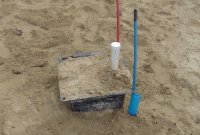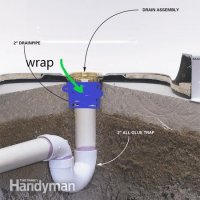I am finishing the relocation of a drain after replacing the tub with a shower base and I will probably need to pour concrete back. The opening I created will be entirely under the shower base that I am installing so my question is this: How thick does the concrete have to be. The shower base is pretty sturdy (Kohler Ballast model 60x32) and heavy and it will be set in mortar as well.
I would avoid pouring a very thick concrete layer if I don't have to as this is my first job of this sort and I would like to be able to easily break the concrete and fix whatever needs to be fixed if anything will ever need fixing. I guess ideally it would be nice to just fill the opening in the floor with sand.
The shower base will be along the right side of the picture with the shower drain in the deeper area that see in the picture

The plan is to set the shower base level and then add self leveling concrete around it so I can install tiles.
I would avoid pouring a very thick concrete layer if I don't have to as this is my first job of this sort and I would like to be able to easily break the concrete and fix whatever needs to be fixed if anything will ever need fixing. I guess ideally it would be nice to just fill the opening in the floor with sand.
The shower base will be along the right side of the picture with the shower drain in the deeper area that see in the picture

The plan is to set the shower base level and then add self leveling concrete around it so I can install tiles.



